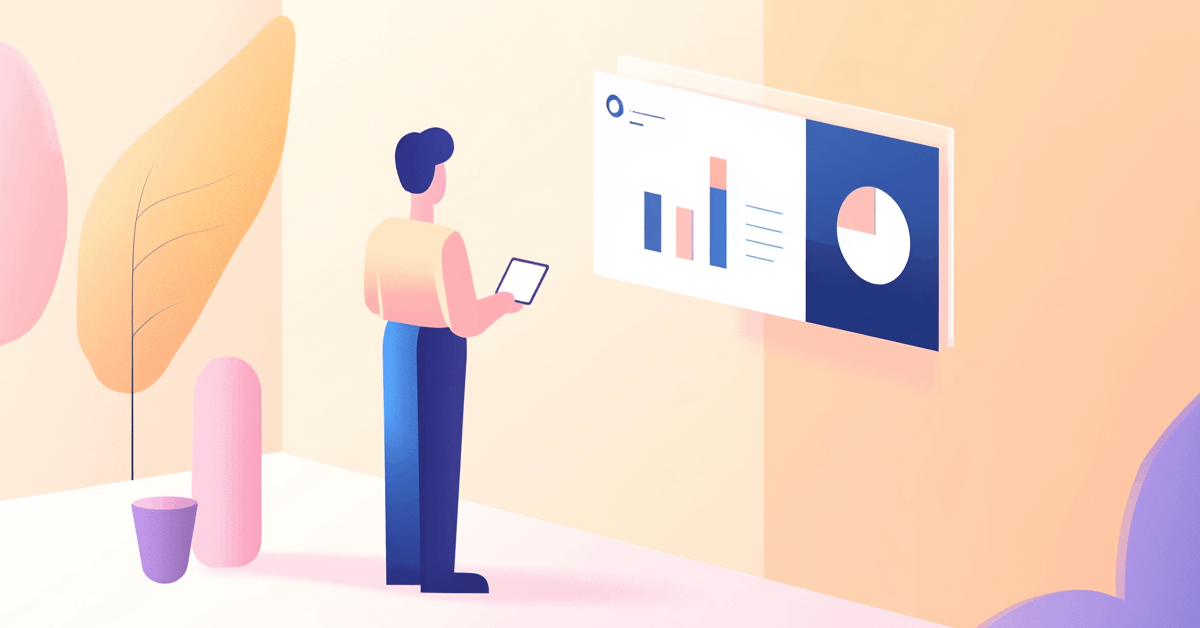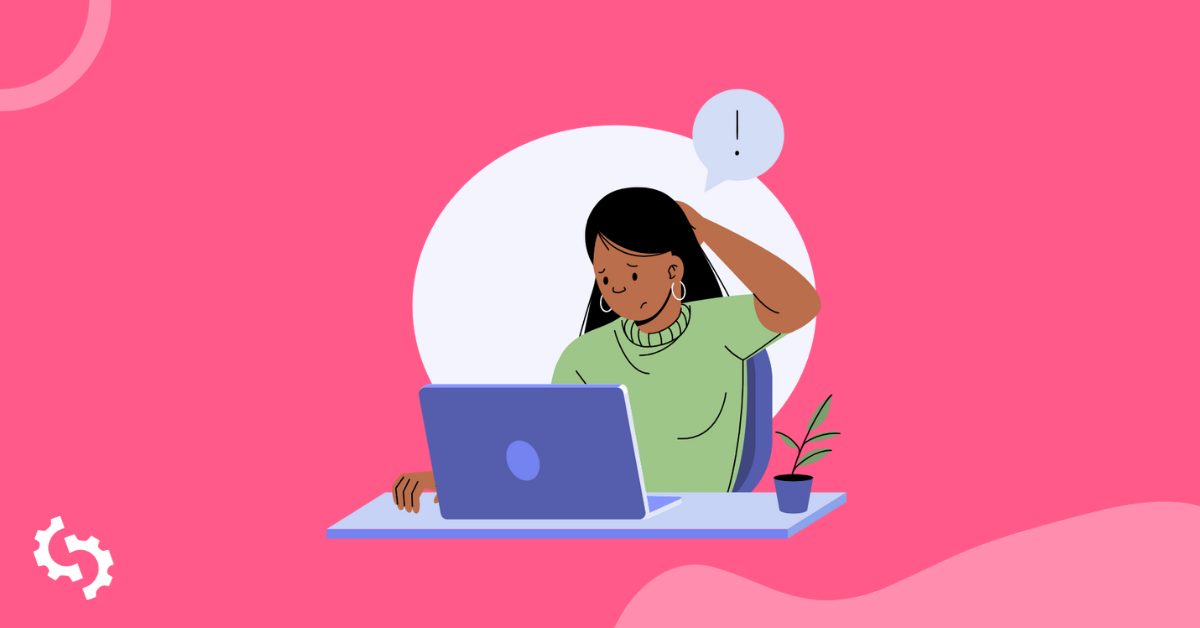
When it comes to your SEO, the consequences for cheating can be far more damaging and permanent. Google is targeting unnatural links, or links that have been built or acquired in ways that it perceives as "gaming the system."
If Google finds unnatural links in your backlink profile, your website will be penalized for it.
Not a smart move for long-term success.
In this post, I've discovered 15 types of unnatural links that Google can penalize you for—and I'll tell you exactly how to fix them before they permanently damage your rankings!
What are Unnatural Links and Why Does Google Hate Them?
Google's vision of unnatural links is essentially this:
Any link that was artificially acquired for the sole purpose of manipulating your PageRank directly damages the integrity of Google's SERPs, because it serves content to users that they may not benefit from at all.
Put that way, how can you blame Google?
The reality is that unnatural links wouldn’t exist in a Google-free world, and rarely are they helpful for the user.
In fact, most are built purely to game the system and get higher rankings without adding real value.
Because of this impact on the integrity of the SERPs, Google has been manually penalizing sites for unnatural links since the very start.
Google Penalties for Unnatural Links
Unnatural links can be inbound (someone links to you) or outbound (you link to someone).
If you're issued with a manual action in your Search Console, Google will clearly state whether the unnatural links are "to" or "from" your site.
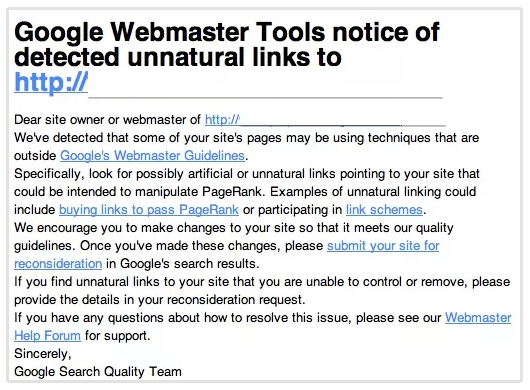
How to Find Unnatural Links
Before we dive into the realm of unnatural links and how to fix them, it's a good idea to first tackle how to find these links in your backlink profile so that you know exactly where to act.
To do this, I recommend using SEOptimer to track and analyze your inbound links.
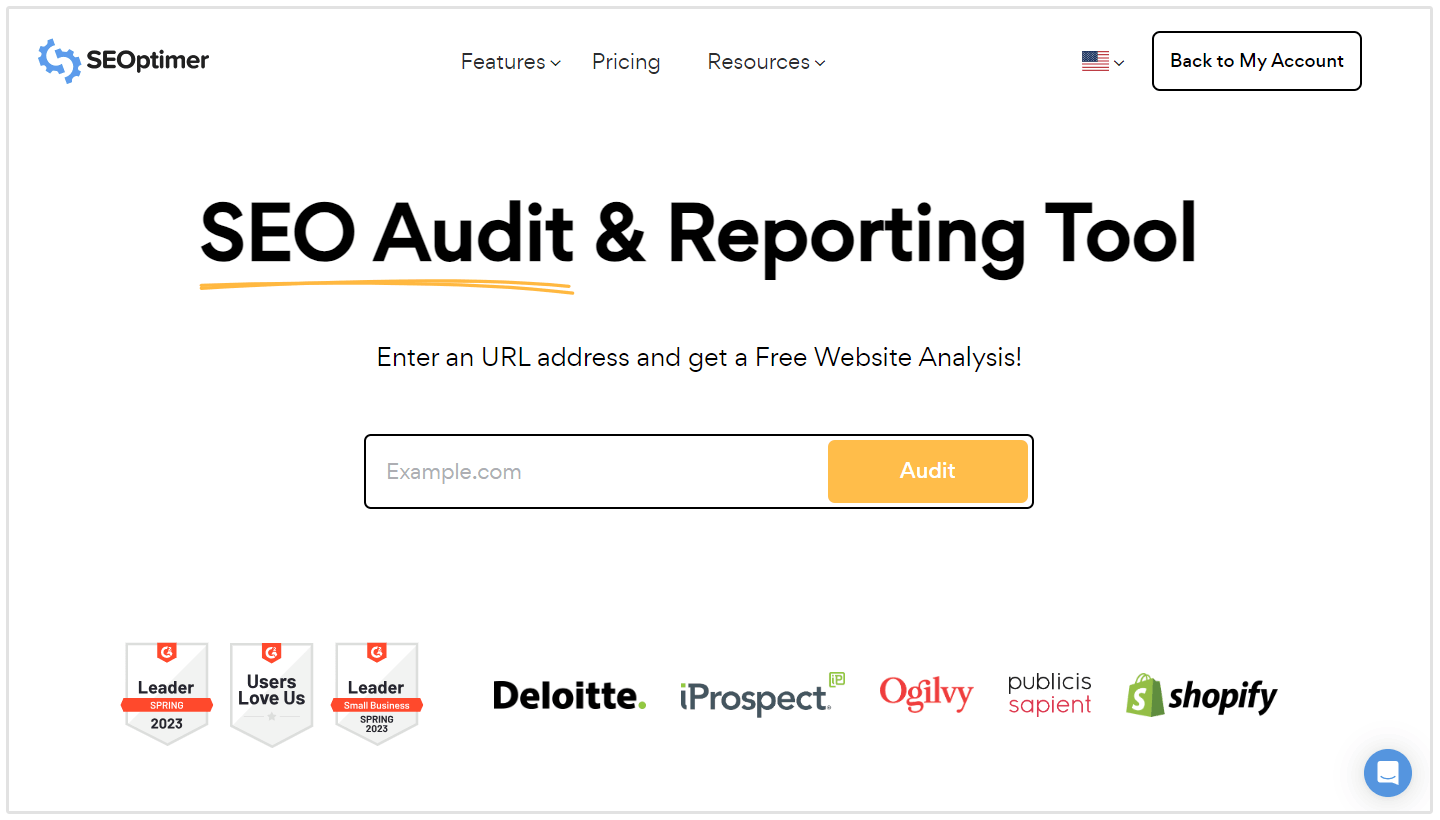
Simply log in to your account, and navigate to the "Backlink Research" tab on the left.
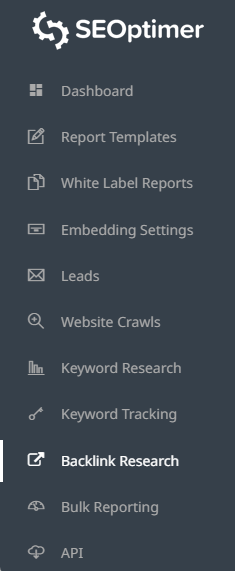
Then plug in your website's URL, and then click on "Research."
Here you'll be able to view your entire site's backlink profile, including how many dofollow vs nofollow links pointing to any page you want to study, popular anchor texts, and more.
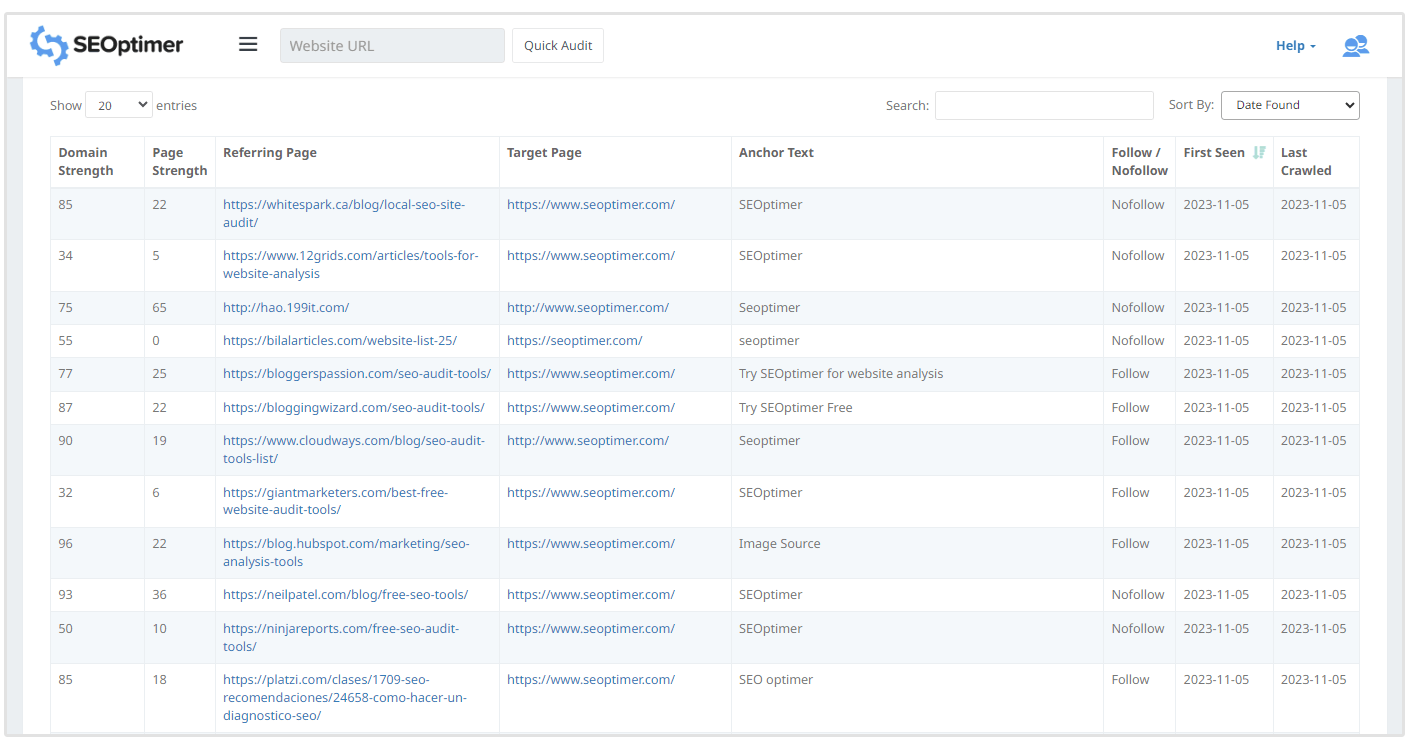
How to Fix Unnatural Links
When you find unnatural links, Charlie Worral from Imaginaire Digital has some straightforward advice:
The best way to 'fix' an unnatural is to first look at whether or not it's a worthwhile link. Look to whether or not you can make the link look more natural, try to contact the webmaster of the site or even the journalist of the story that has linked to you, and ask them to link from a different part of the article or change the anchor text to something that makes sense.
Unfortunately, unnatural links can't always be fixed or improved. Sometimes the best course of action is to remove or nofollow the link in question.
In the next sections, I'll show you 15 of the specific types of unnatural links that Google is known to penalize for, as well as the best way to go about fixing each one.
How to Avoid Unnatural Links
Unfortunately, avoiding unnatural links to your site is very difficult, because you'll always find spam everywhere.
Negative SEO is also a reality, and then there are those bad SEO choices that you'll just have to deal with.
But, one thing you do have more control over is the outbound links on your own site.
You can choose your guests writers, advertisers and any link exchanges with partners or friends. You also have full editorial control over the links on your site.
When it comes to unnatural inbound links, you can help to avoid them (or at least minimize their impact) by monitoring all the new backlinks you earn, and acting quickly if you receive a manual action. Google gives us examples of link schemes that include paid links, excessive link exchanges and over-optimized content links.
The experience of SEOs and webmasters in the real world, however, shows that there are more cases where Google penalizes for "unnatural links."
Here are 15 of them to know about, and what to do to fix them:
1. Circular Link Schemes
Type: Unnatural links to/from your site
Fix: Remove or nofollow
You might've heard of this kind of scheme before—they've been around since the early 2000s.
The scheme is "circular" because you have:
- Site A linking to Site B
- Site B linking to Site C
- Site C linking to Site A
Basically, that's the minimal topology of a link farm.
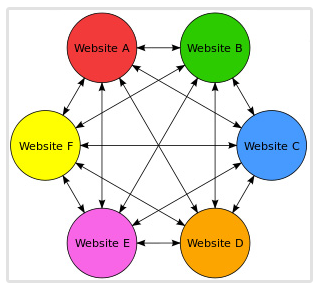
This scheme is one of the first that Google has been actively fighting since the very start of SEO.
If there is absolutely no legit reason to keep these links (i.e. they're not contextually relevant to each other and they don't add value for the end user), you want to break the circle.
You can do that by either nofollowing the links, or by getting them removed entirely (or just remove them yourself, if the pages are yours).
If the webmaster doesn't agree to nofollow or remove the link from their site and you're dealing with an unnatural links penalty (a manual action), you can use a disavow tool to quickly disavow the links.
2. Link Exchanges Done Solely to Boost PageRank
Type: Unnatural links to/from your site
Fix: Remove or nofollow
The social nature of link swapping was never Google's target, so if you're thinking about removing your friends' or partners' links from the Blogroll or Partners page, you can stop right there—that's not the type of link exchange Google is after.
This link exchange page at SueAnnabrookeJones.com, for example, is well done and designed to create a network of similar sites that's genuinely helpful for the reader.
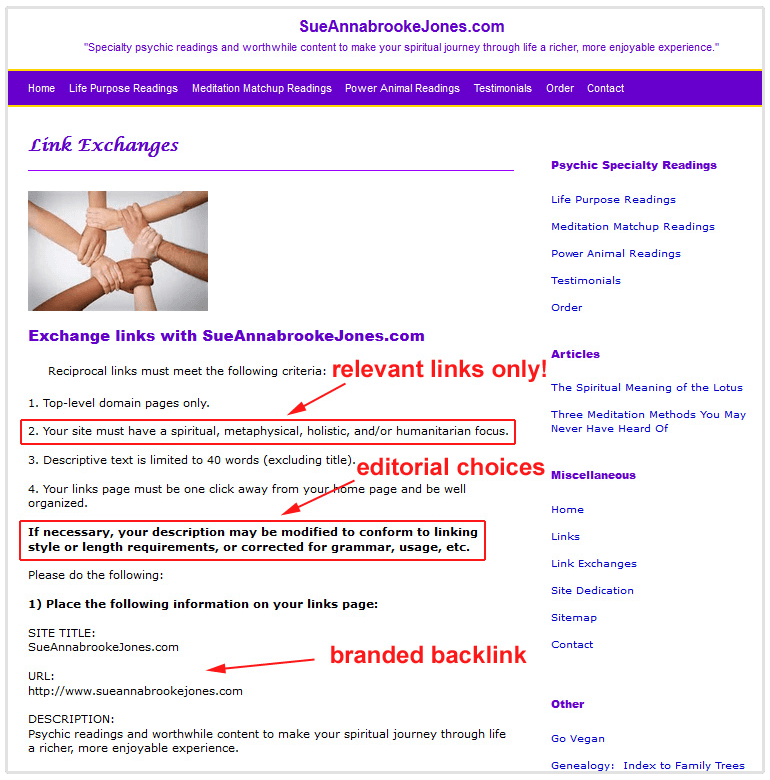
However, pages created for link exchanges that exist solely to manipulate PageRank are blatantly part of a link scheme.
They usually consist of long lists of links to random, unrelated websites, and the webmaster rarely adds editorial comments to the links. You can also expect to see a lot of over-optimized anchor texts.
This is why Google won't tolerate them. When Google condemns "excessive link exchanges," it's because there's nothing natural or social about this kind of pattern.
Link exchanges like this are also what Google calls "forced followed backlinks by contract," because the other party isn't allowed the choice of using nofollow tags or robots.
You should remove or nofollow these unnatural links using the same process described in #1.
3. Injected Links
Type: Unnatural links to/from your site
Fix: Stop using automated software, remove or nofollow the links
If you ever used automated software or services to place backlinks across the web, you might have attracted an unnatural link penalty.
These software work like XSS scripts: They inject links within publishers' content without editorial control.
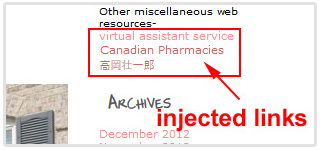
The example above comes from the Archive.org version of an old personal blog of mine (dated 2012).
At that time, in order to make a little extra passive money to renew the many domains and hosting accounts I had, I used text link ads services that automatically injected advertisers' links into the area of my page where I added the script.
The result was the ugly thing you can see above.
No wonder that Google (and publishers themselves) don't appreciate this kind of quick resort to getting links up.
The only way to fix these types of unnatural links is to stop using the software or service that spreads links across publishers' pages, and try to get the backlinks removed or nofollowed by contacting the webmasters.
If outreach doesn't work, disavow the links.
4. Links from Low-quality Directories and Bookmarking Sites
Type: Unnatural links to your site
Fix: Remove or nofollow
There are directories and then there are directories.
Some are the wonderful, niche-specific, industry directories where you can find relevant sites.
And then you have this stuff (from a directory that claims to be human-edited, but from the look of these results, you could say otherwise):
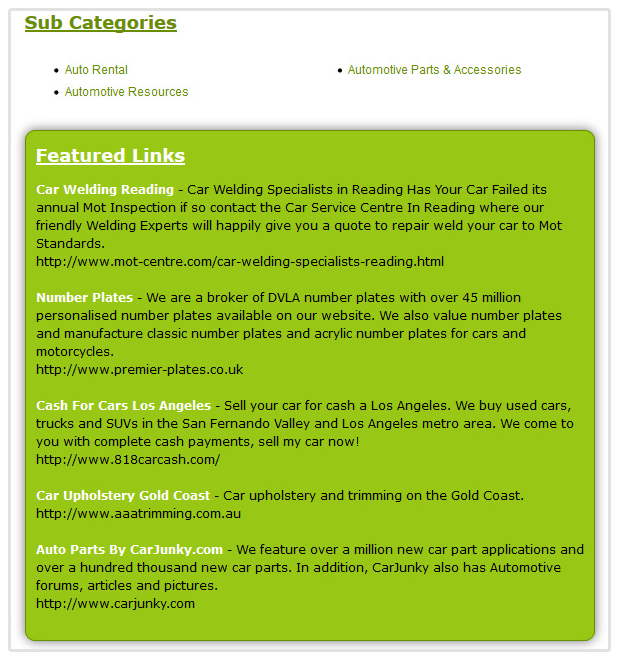
Backlinks from these directories exist solely for SEO, so they have little to no value for the user.
The same can be said for social bookmarking sites that exist only for links. They're spammy in nature—in a way, they could be called fake signals.
Google doesn't like them because they have no value for the user and they only exist to manipulate search engines.
All you can do here is get your link removed or nofollowed, or disavow if you get no response.
5. Over-Optimized Links in Press Releases and Syndicated Content
Type: Unnatural links to your site
Fix: Edit anchor text, remove or nofollow if needed
You know the type of over-optimization I'm talking about:
"Cheap hotels chicago"
"Easy payday loans 2019"
The anchor text spam you can find in press releases and syndicated content is crazy!
It's not hard to see how these keywords fail to flow naturally within the text. Often, they're repeated multiple times until the content becomes practically unreadable (keyword stuffing at its worst).
Yes, over-optimization is that bad—and it goes against the entire purpose of the content.
This type of content exists to promote a message, and even the links need to serve that scope. Sure, getting SEO benefits is nice—but this is not the way to go.
To fix things here, get those over-optimized links edited to sound more natural. If that's enough to lift the penalty or clean your backlink profile, you're done.
But if you still have issues, nofollow or remove them.
6. Paid Links That Pass PageRank
Type: Unnatural links to/from your site
Fix: Edit, nofollow or remove if needed
Google isn't exactly fond of paid, followed links.
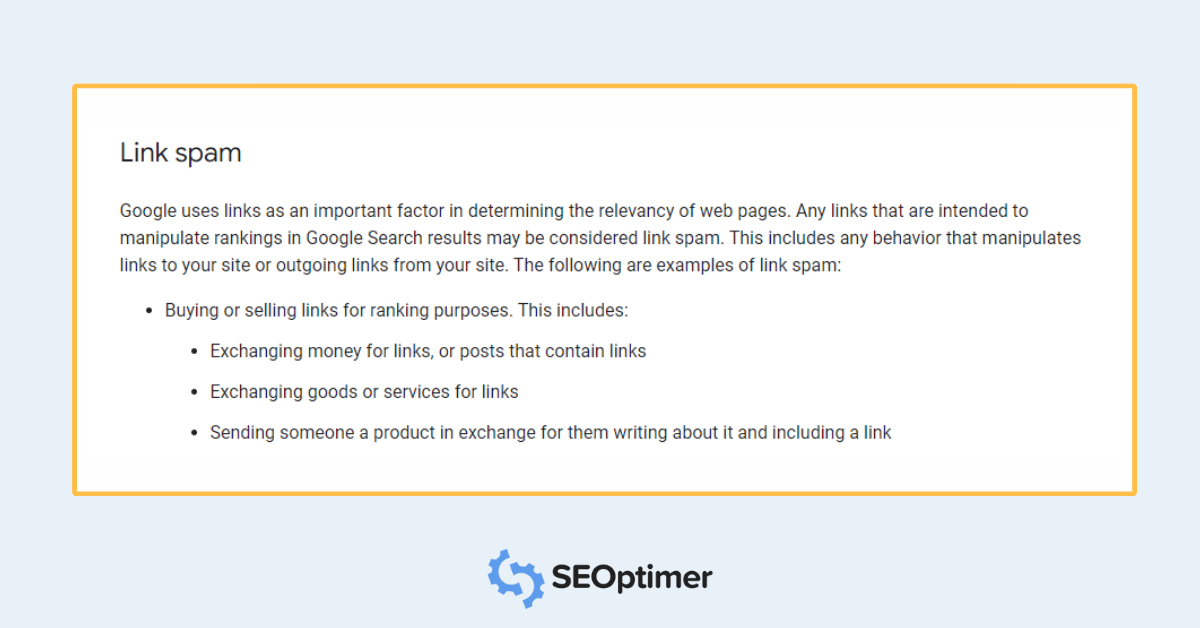
The reason why is clear: Anyone can simply go and drop some cash to inauthentically boost their rankings and search engine visibility.
Paid links can take the shape of sponsored blog posts, text ads, banner ads or advertorials.
Often they have no real value for the user, and are blatantly spammy.
The best thing you can do here, since you've already paid for the links, is to request that the publishers add a nofollow attribute to your links. This will guarantee that you still get traffic from the backlinks, but they won't pass PageRank.
If the links were over-optimized, you should also request an edit to make them flow naturally with the text and the overall content of the website.
If you have no luck with those steps, you'll need to remove/disavow the links.
7. Links from Private Blog Networks (PBNs)
Type: Unnatural links to/from your site
Fix: Remove or nofollow
Private blog networks (PBNs) may sound like a good idea.
Connected sites that link to each other for the sake of users and SEO benefits! That'll make things much easier than having to reach out and build links, right?
However, not all that sparkles is gold. Rarely are PBN backlinks of any value to the user (because if that was the idea, then Google wouldn't be against the practice).
But let's see how it can play out in real life:
Dan Hollister from CanIRank dealt with a client who experienced a significant hit in their organic traffic after a Google update.
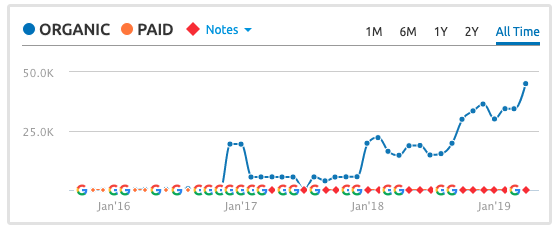
Upon analysis of the client's backlink profile, the results were amazing.
Dan says that the URLs and anchor texts seemed to exactly match many of the high-value keywords in the client’s industry. In the end, they found out it was a bunch of PBN backlinks that previous company owners had built, making the site’s backlink profile look unbalanced and artificial.
It was time to act and fix!
Dan told me how:
"We developed a plan to tackle the network in links, being careful not to move too quickly.
Working through the list, we took down sites we could still access and disavowed the obvious offenders.
For those links we weren’t sure about, we took things on a case-by-case basis, depending on the ranking factors of the linking site and the content in which the keywords was included.
In a matter of weeks, our client’s site saw a rise in organic traffic and rankings improvements across the board."
8. Spammy Followed Links in Comment Sections
Type: Unnatural links to/from your site
Fix: Remove or nofollow
Again, we have a case of over-optimization and abuse from spammers exploiting the comment sections in blogs and news sites.
I faced an "Unnatural links to your site" penalty twice in seven years thanks to spammy links in blog comments.
They spammed my blog comment form, and then used the comment links they created to link back from spammy forum threads.
You can try to remove or nofollow these links by reaching out to the webmaster, but sometimes that might be just too much when the number of spammy links is high.
Disavowing is the best option here if you want to keep your sanity.
9. Spammy Links from Blog Posts and Product Pages
Type: Unnatural links to/from your site
Fix: Remove or nofollow
Ah, these ones are a joy to deal with (some more sarcasm today).
They could be paid links, over-optimized links or the result of a naive SEO or influencer campaign.
Justin McIntyre, Director of SEO & Content at Perfect Search Media, told me about working with a travel company that purchased thousands of spammy pharmaceutical links.
"We detected these after the website received a manual penalty.
The links were from a wide variety of spammy referring domains, and the anchor text was typically some sort of prescription drug.
We cataloged the 20 most common variations of anchor text and then reviewed the entire backlink profile for only instances of that anchor text.
The goal was to remedy the spammy backlinks as quickly as possible so that the manual penalty would be lifted, and then to return to the remainder of the backlink profile for review at a later date."
The penalty was removed after disavowing the referring (spammy) domains.
10. Spammy Links from Forum Posts, Profiles and Signatures
Type: Unnatural links to your site
Fix: Remove or nofollow
Anyone who's ever frequented or created a forum will know about this well.
You know those user profiles that never post anything, and that were created just to use the backlink field and stuff the profile bio with keywords?
And then maybe they'd go on to publish unreadable posts of gibberish text (probably automated).
And don't forget about the signatures: Is there any better place to stuff your optimized links that turn off both the user and search engines?
If you've done this before, I recommend removing all the links you can, and contacting the forum administrators to remove any that you can't.
If you can't do this, or the mess was caused by a spammer or a negative SEO attack, just go ahead and disavow the links.
11. Spammy Links from Guest Posts and Sponsored Content
Type: Unnatural links to/from your site
Fix: Edit, remove or nofollow if needed
Matt Cutts wrote a lot about the problems of guest posting just for SEO and how unhelpful it can be for search engines.
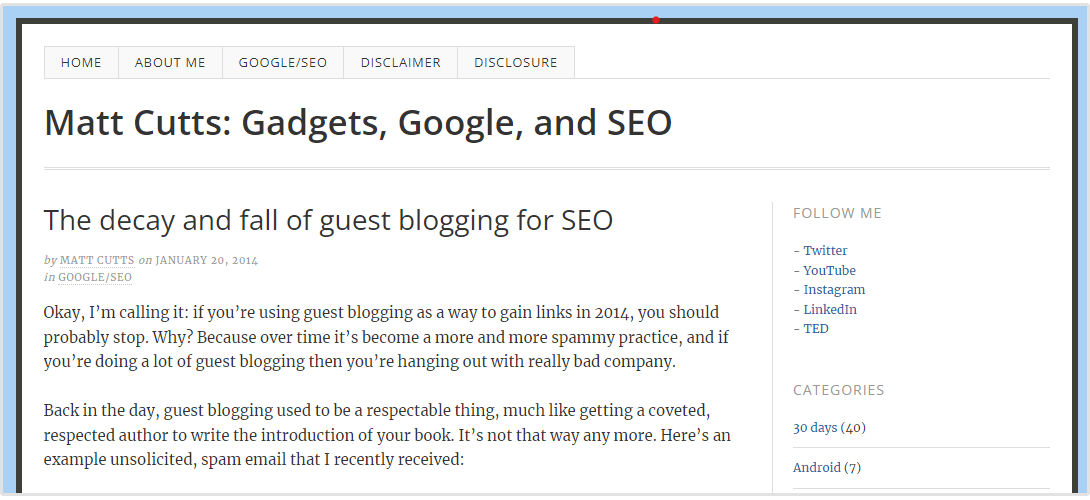
When you guest post just for SEO, you fail to share a message with readers and to use relevant links that will help them.
All you do is regurgitate something everybody already knows just to throw in a backlink or two.
And that's spam, not promotion.
Unfortunately, that's what you typically get when you hire cheap writers to write your guest posts.
Sponsored content is the same. High-quality sponsored content is nothing like paid links—it's more like affiliate marketing done well.
But spam in either context is never useful.
Get these links nofollowed or removed if you can, or disavow them.
However, if you're getting good traffic from the posts, work with the bloggers and webmasters to improve the content and replace the spammy links with new links.
12. Spammy Service Sites
Type: Unnatural links to/from your site
Fix: Remove or nofollow
You know those downloadable SEO tools, wallpapers or icons—the web is full of them.
And often there's a lot of link spam that comes with these services. They sell ads that pass PageRank or ask users to link back to them, or they do unrelated link exchanges.
If you want to use their stuff, you often don’t have any editorial input on the backlink.
It's likely to be hard to remove these links, so the best you can do is disavow them.
And if you're the owner of one of these sites, remove anything spammy as soon as possible.
13. Spammy Sitewide Links
Type: Unnatural links to/from your site
Fix: Remove or nofollow
When the blogroll, footer and sidebar link spots aren't used for genuine reasons (show off your friends' and partners' sites, offer navigation goodies to the user, etc.), it's likely that Google is going to notice and act upon it.
Mary from BorderlessMind had one client whose organic traffic dropped, and had received an unnatural links penalty.

That meant trouble for the client because one of the consequences of an unnatural links penalty is indeed the drop of traffic for specific search terms—or overall traffic at its worst.
Webmaster outreach was the first step that Mary and her team took to try and get the links removed, but the response wasn't 100% positive.
Mary and her team saw their client's penalty lifted after two weeks from submission of their disavow file and reconsideration request, although it took some time for them to recover their past positions in the SERPs.Most of the webmasters responded favorably, though there were still about 20% of the links for which we didn’t receive any response, even after the repeated followups.
Next step involved disavowing the remaining bad links using Google’s disavow tool.
14. Spammy Widget Links
Type: Unnatural links to/from your site
Fix: Edit the link, remove or nofollow
Free widgets that you can use on your website often come with linkware usage terms that force you to link back to their service (without a nofollow tag).
These links might sometimes be from casino or adult sites, and you have no choice in changing the link, nofollowing it or asking the widget creators if they have a link that's more suitable for your site.
And by now you know that every time the choice is taken away, Google goes and penalizes.
So, try to contact the widget creators to see if you can come up with a different agreement (e.g. an honest review) and ask them to remove the spammy backlink.
Or nofollow it, if they insist.
Or even better, just stop using the widget. Look into better alternatives or ways to promote your website without it, like collaborating with users and getting reviews.
If you're the creator of the widget, edit or remove the link from the widget script. (The editing is simply to make the link nofollow or branded without over-optimization.)
Then, disavow any existing backlinks.
15. Unnatural Links from Redirected Domains
Type: Unnatural links to/from your site
Fix: Remove or nofollow
Redirection doesn't happen only in the form of cloaking from negative SEO attacks.
Backlinks to your old domain that you're now redirecting to your new one can also trigger a manual action for unnatural links.
Jaykishan Panchal, Content Marketing Manager at E2M Solutions Inc., dealt with this kind of issue when he tried to lift a client's penalty.
It took a lot of cleaning up for both the old and new domain, and two reconsideration requests, before the penalty was finally lifted and the client's traffic was back.One of our clients noticed a drastic decline in traffic for one of his websites. While analyzing it, he found out that Panda and Penguin had struck it and brought his target keyword from the top 3 to the third and fourth pages.
He moved to a new site and redirected its traffic to get things going. But it wasn't enough. After six months, he got in trouble again with a manual penalty for unnatural links.
While scanning the problem, our team found that his old site was affected by several sites sending sitewide, exact-match anchor text links.
And because the traffic was redirected, these links were damaging his new site too.
Jaykishan recommends checking if there's more than one kind of penalty applied to your site, especially when redirection from an old domain is involved.
Unnatural Links Wrap-up
Acting fast is the best course of action when it comes to unnatural links.
Sometimes it won't be easy to get webmasters to remove previously placed links. But when everything else fails, you can always disavow and forget about it.
All in all, the whole thing is much less stressful than it sounds—so don't panic if you're currently dealing with an unnatural links penalty from Google.
Take things easy, one step at a time, and clean your backlink profile so it shines!


